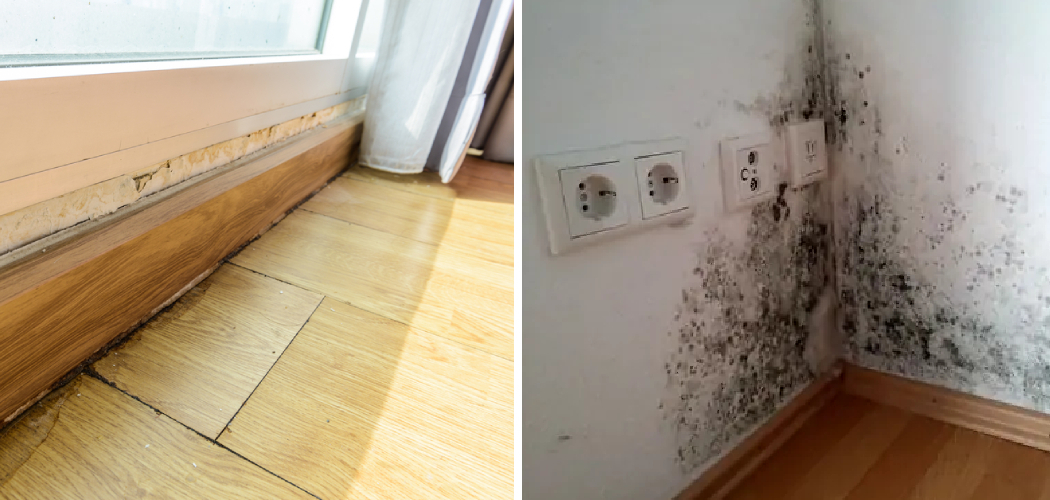Noticing a musty smell in your home? It may be time to check for mold—especially under flooring. Mold can result from water damage, humidity, and poor ventilation; all of which could cause serious health problems if not tackled quickly.
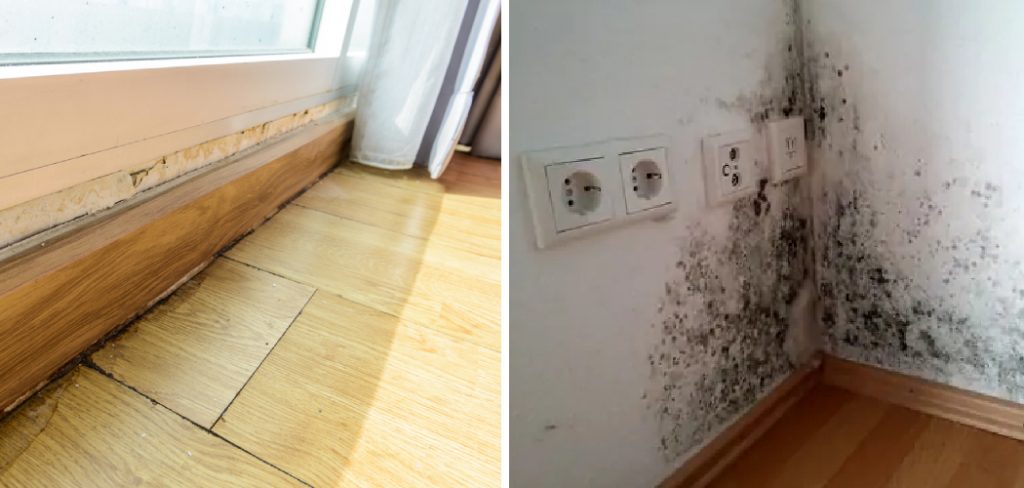
In this blog post on how to detect mold under flooring, we’ll discuss the dangers of mold formation beneath flooring and how you can detect it before it gets out of hand. With the right information and equipment at your disposal, you can easily identify any potential growth in order to keep your family healthy and safe. Read on to learn more about detecting mold underflooring!
11 Step-by-step Instructions on How to Detect Mold Under Flooring
Step 1: Visually Inspect Your Floors
Before you do anything else, take some time to visually inspect your floors. Look for discoloration, swelling or peeling, which could indicate the presence of mold growth. This will be especially noticeable on any wooden flooring.
It’s also important to check around baseboards and other edges, as moisture can get trapped in these areas. But if you don’t see any signs of water damage or discoloration, that doesn’t mean there might not be mold lurking underneath. This is why it’s important to move on to the next step.
Step 2: Test for Moisture
Moisture is essential for mold to grow. Use a moisture meter or hygrometer to detect any moisture in the area under your flooring. The higher the humidity level, the greater the chance of developing a mold problem. This is especially true if the humidity level exceeds 60%. This is why it’s important to take precautions to control the humidity level in your home.
It’s also important to check for any leaks or standing water, as this could be a sign of mold growth. This is one of the most important steps in detecting mold under flooring. This is why it’s important to use a moisture meter or hygrometer to accurately measure the level of humidity in the area. For more accurate results, use a professional moisture meter.
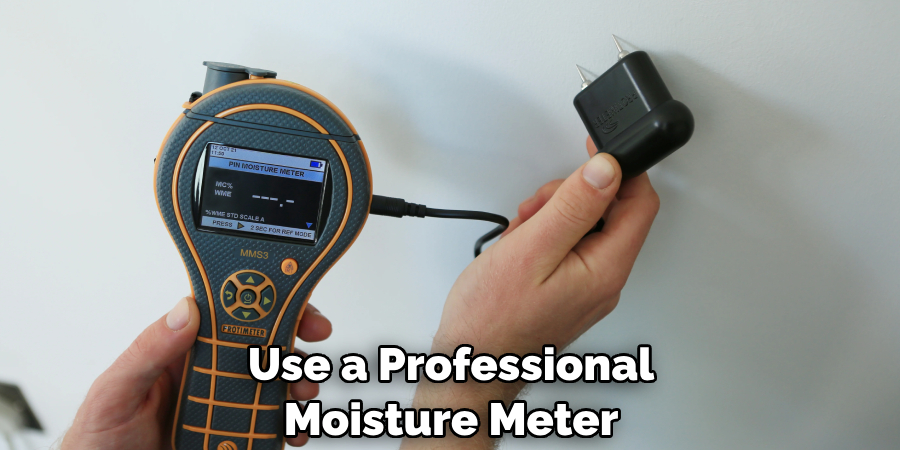
Step 3: Check Air Quality
An easy way to determine if you have an issue with air quality is to use an indoor air quality monitor. This device will measure levels of dust, carbon dioxide and other particles that indicate poor air quality. It can also be used to detect mold spores in the air. This is another good way to detect any sign of mold under your flooring.
It’s also important to open the windows regularly to allow for proper ventilation and air circulation. But if you still notice poor air quality in your home, it may be time to call a professional for help. You can also use an air purifier to help improve indoor air quality. It’s important to remember that mold spores can survive in air ducts, so it’s important to inspect these as well.
Step 4: Use a Black Light Flashlight
Using a black light flashlight is an effective way to check for mold growth under flooring. A black light can detect the presence of certain molds that are otherwise invisible to the naked eye. It will also help you detect any mold that may have started to form in the insulation around your floors. This is an important step as mold can easily spread through insulation, creating a bigger problem.
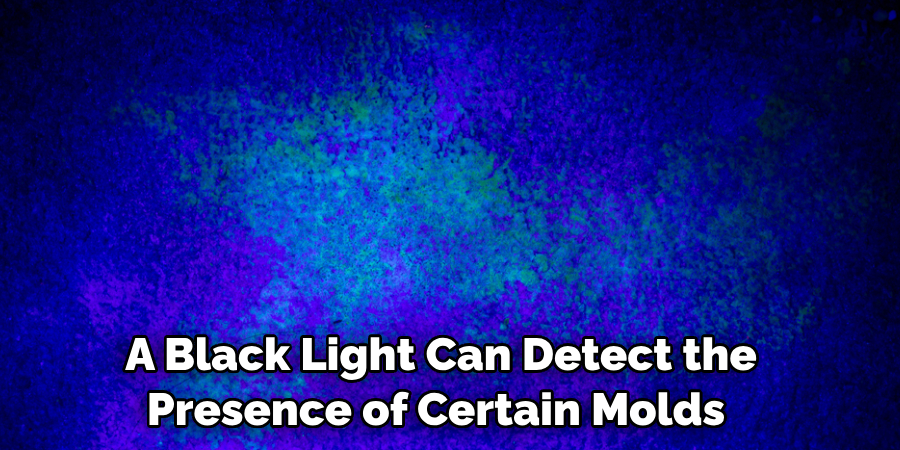
But if you can detect it early on, it’s easier to take steps to eliminate the mold. This is why it’s important to use a black light flashlight to detect any signs of mold under your flooring. It’s also important to note that this type of flashlight can detect different types of mold, so it’s important to use one with a broad spectrum of detection.
Step 5: Look for Visible Signs
If you still don’t see any signs of mold after testing moisture levels and air quality and using a black light, take a closer look. Look out for discoloration, warping or buckling in your flooring as these could all indicate the presence of mold.
It’s also important to pay attention to any musty odors or smells, which could be a sign of mold. If you notice any of these signs, then it’s definitely time to call a professional and have them take a closer look. If they detect mold, they can recommend the best course of action.
Step 6: Examine Subfloor
Carefully examine the subfloor beneath your carpet, tile or other flooring material. If there’s visible damage or discoloration, it may be time to call in a professional for an in-depth inspection. If the subfloor is wet, it’s likely that there’s mold growth in the area. This could be a serious problem and should be addressed as soon as possible.
It’s also important to check for any mold growth in the walls and ceilings near your flooring as these could easily spread. This is why it’s important to get a thorough inspection of the entire area. If you’re not sure, call a professional to make sure everything is taken care of correctly.
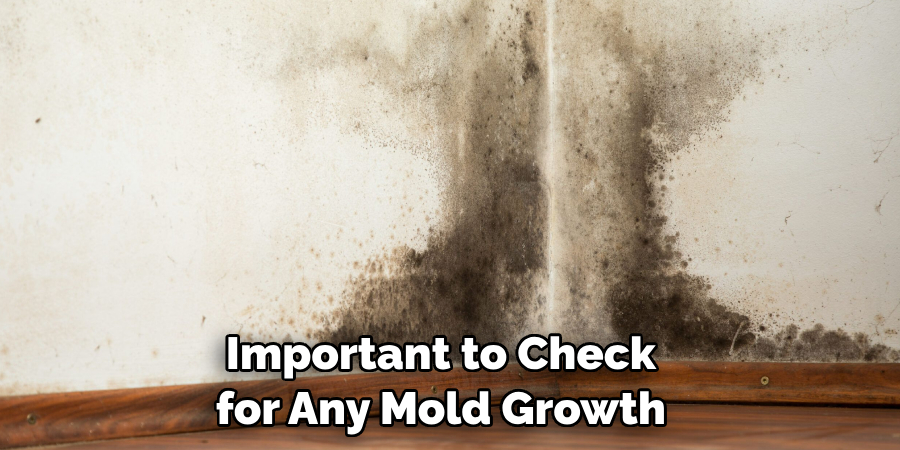
Step 7: Check for Leaks
If you find any leaks or water damage, this could be a sign of mold growth beneath your flooring and should be taken seriously. Call in a professional as soon as possible to take care of the issue before it becomes worse.
But if you don’t see any water damage or leaks, that doesn’t necessarily mean there isn’t mold under your flooring. This is why it’s important to take other steps to check for mold growth. It’s also important to make sure you repair any water damage as soon as possible to prevent further mold growth. This is one of the most important steps in detecting mold under flooring.
Step 8: Open Up Walls and Floorboards
In some cases, the best way to detect mold is to open up walls and floorboards. This will give you access to areas that may have become damp due to plumbing issues or other issues hidden away beneath floors and walls.
Make sure you wear proper safety gear when doing this! If you don’t want to open up walls and floorboards yourself, call in a professional who can do the job safely. It’s important to remember that mold can spread easily if the area isn’t properly cleaned and dried. If you do notice any water damage or mold growth, it’s important to act quickly and call in a professional.
Step 9: Take Samples
Take samples from under your floor if you believe there may be mold present. This will allow you to send them off for testing to a qualified laboratory. If the tests come back positive for mold, then it’s important to act quickly and take steps to remove it.
If you don’t have the proper equipment, devices or knowledge to do this yourself, it’s best to call in a professional who can take care of the issue for you. This is the best way to make sure it’s done correctly and safely. This is one of the most important steps in detecting mold under flooring.
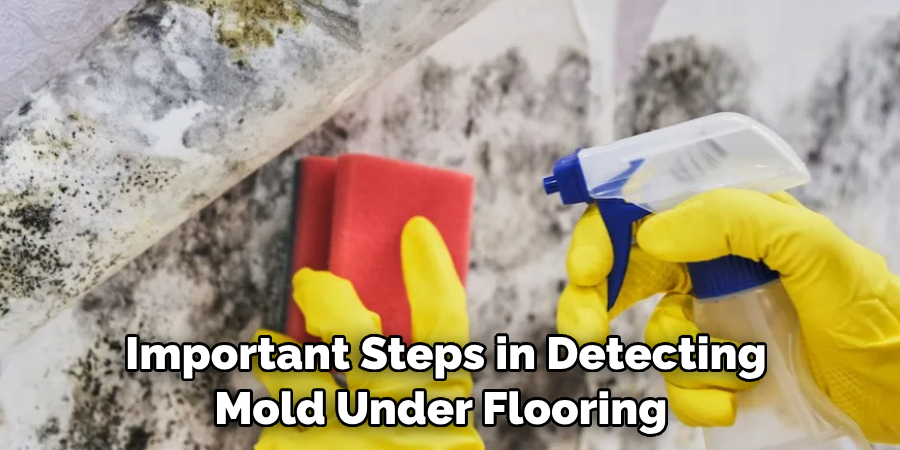
Step 10: Call in an Expert
If you’re unsure of what steps to take or don’t have the proper equipment, consider calling in an expert. They’ll be able to confirm whether there is indeed mold beneath your flooring and can provide the best advice on how to remediate the problem.
If the levels of mold are too high, you may need to replace some of the flooring in order to get rid of the mold completely. Calling a professional is the safest way to ensure that the mold is removed properly and won’t cause any further damage or health problems.
Step 11: Clean Up Any Mold Detected
Once any existing mold has been identified and located, it’s important to clean up as soon as possible. This could involve replacing damaged flooring, getting rid of damp materials and using the right cleaning products for the job. It’s also important to address any underlying causes, such as plumbing leaks or humidity. Always make sure to take the right safety precautions when cleaning up mold, as this can be a dangerous job.
Knowing how to detect mold under flooring is essential for keeping your home and family safe from the potential health risks associated with this type of growth. By following these steps and calling in an expert if necessary, you can be sure that any mold problems will be taken care of quickly and effectively. Good luck!
Do You Need to Use Professionals?
If you are unsure of how to detect mold under the flooring or don’t have the right equipment, it is best to call in a professional. They will be able to identify any potential problem areas and advise you on the best course of action. It’s also important to get proper licensing and insurance if carrying out any major cleaning or repair work yourself.
Frequently Asked Questions
Q: What Are the Dangers of Mold Under Flooring?
A: Mold can cause serious health problems, such as respiratory issues, allergies, and asthma attacks. It is also a major contributor to indoor air pollution, reducing the quality of your home’s environment.
Q: What Are the Best Ways to Detect Mold Under Flooring?
A: Visually inspect your floors for discoloration and use a moisture meter or black light flashlight to check for hidden mold growth. You can also take samples from under your floor and send them off for testing at a qualified laboratory.
Q: When Should I Call In an Expert?
A: If you are unsure of how to detect mold under flooring or don’t have the right equipment, it is best to call in a professional as soon as possible. This will ensure that any problems are dealt with quickly and effectively.
Q: How Can I Clean Up Mold Under the Flooring?
A: Once any existing mold has been identified and located, it’s important to clean up as soon as possible. This could involve replacing damaged flooring, getting rid of damp materials and using the right cleaning products for the job. It’s also important to address any underlying causes, such as plumbing leaks or humidity.
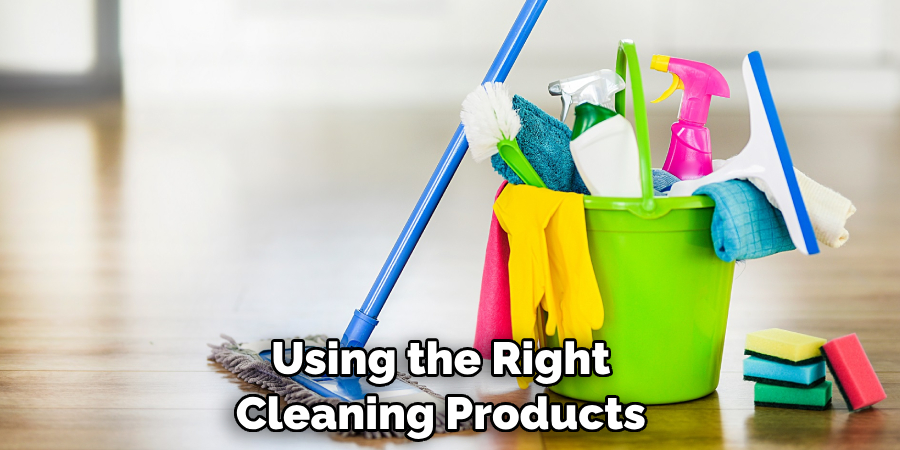
Conclusion
In conclusion on how to detect mold under flooring, detecting and preventing mold under flooring is essential for ensuring the safety of your home. With some careful observation and proactive preventive identification processes, such as routine moisture testing and examination of all vulnerable areas, you can avoid the long-term negative health effects that can arise from persistent mold infestations.
By applying these tips and staying vigilant in your efforts to prevent a developing issue, you can ensure your home’s lasting safety and your family’s health security far into the future. So whether it’s time to replace your wood or carpet flooring or it’s just part of a regular maintenance check-up, take the time and gain peace of mind by inspecting all signs of potential mold under your floorboards to keep everyone safe in their own homes.
